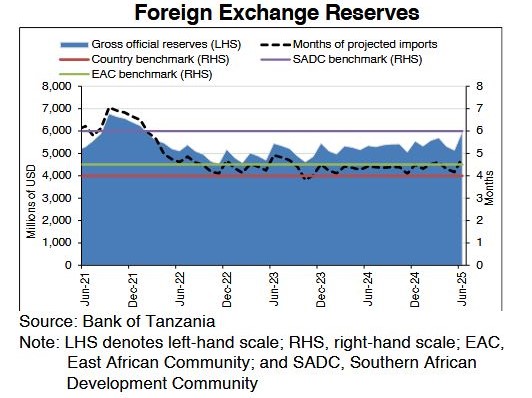Dar es Salaam. The Bank of Tanzania (BoT) has held the central bank rate steady at 6 percent.
A statement issued on April 4 confirmed that the Monetary Policy Committee (MPC), which convened on April 3, 2025, reached this conclusion after assessing the latest economic performance and the projected outlook for the second quarter of the year.
“The MPC observed that the outlook for inflation and economic growth remains within the desired paths, but global trade policies and geopolitical conflicts might affect domestic inflation and output,” reads part of the statement.
Although central banks in many parts of the world opted to lower policy rates in the first quarter of 2025, the BoT cited global uncertainties—particularly trade tariffs and geopolitical tensions—as reasons for retaining the rate for the second quarter.
The first meeting of the MPC was held in January 2025. It set the bank rate at 6 percent.
According to the BoT, domestic economic conditions have continued to improve since January, with the outlook remaining favourable.
This positive sentiment was also reflected in findings from the Market Perception Survey and the CEO’s Economic Perception Survey conducted in February 2025.
In addition, a credit rating report by Moody’s released in March 2025 maintained Tanzania’s rating at B1, with a stable outlook.
Macroeconomic indicators
The BoT estimates that Mainland Tanzania’s economy grew by 5.5 percent in 2024, exceeding the initial projection of 5.4 percent and up from 5.1 percent in 2023.
Growth was mainly driven by agriculture, financial and insurance activities, mining and quarrying, construction and tourism.
For the first quarter of 2025, economic growth is projected at 5.5 percent, with expectations of stronger growth in the second quarter, reaching 6.1 percent.
Headline inflation in 2024 stood at 3.1 percent, down from 3.8 percent in 2023, and remained below the national target of 5 percent.
The figure also aligns with both SADC and EAC convergence criteria.
During the first quarter of 2025, inflation averaged 3.2 percent.
“Inflationary pressures remained subdued due to monetary policy action, adequate food supply, prudent fiscal policy, and moderation of global energy prices,” the BoT said.
Money supply growth was robust in 2024, exceeding 12 percent, in line with the current monetary policy stance. The BoT attributed this growth mainly to increased credit extended to the private sector.
“In the first quarter of 2025, money supply increased in line with improved liquidity,” reads the statement.
Credit to the private sector grew by 12.7 percent, with personal loans—primarily extended to small and medium enterprises—accounting for the largest share, followed by credit issued to agriculture, trade, and manufacturing sectors.







